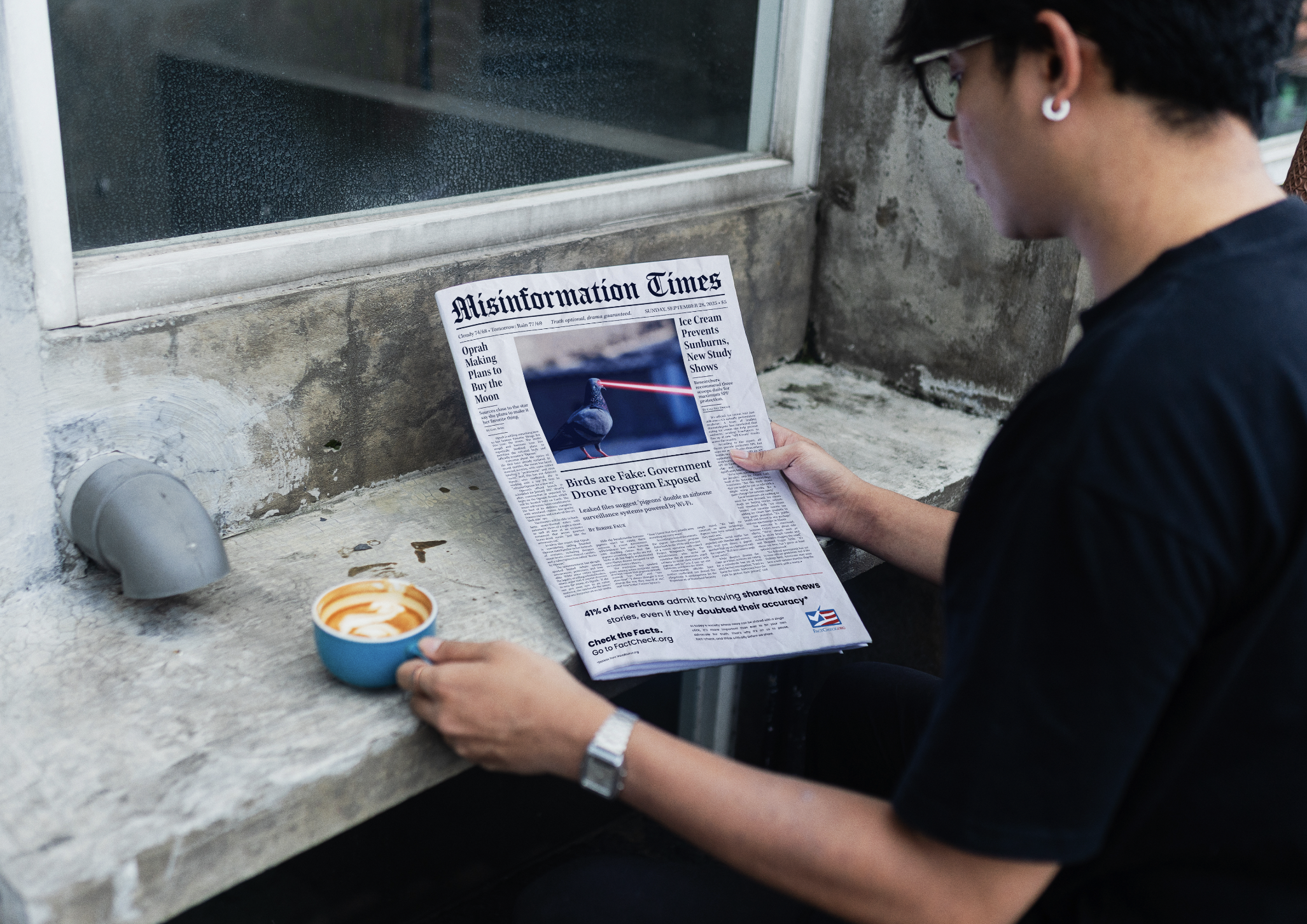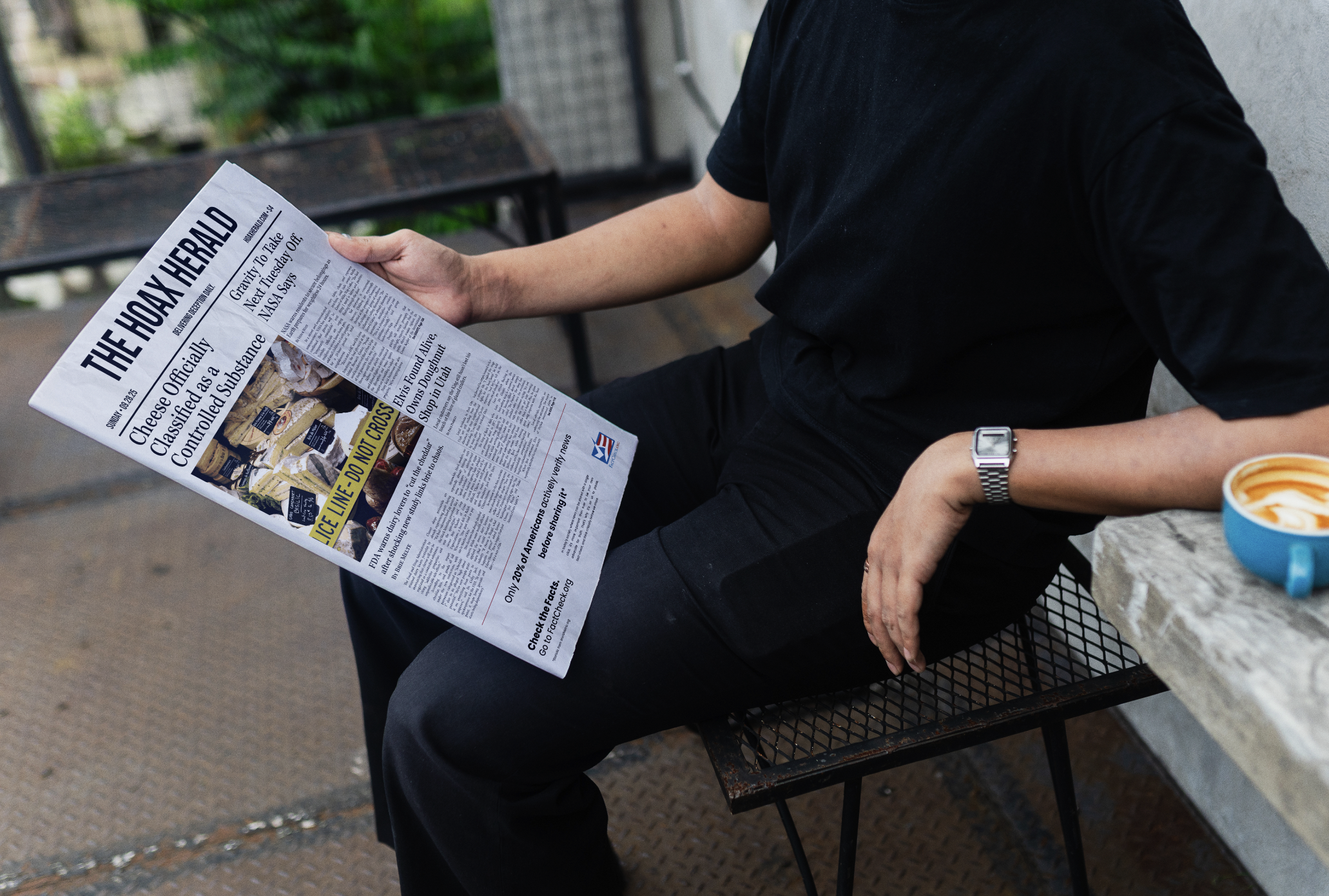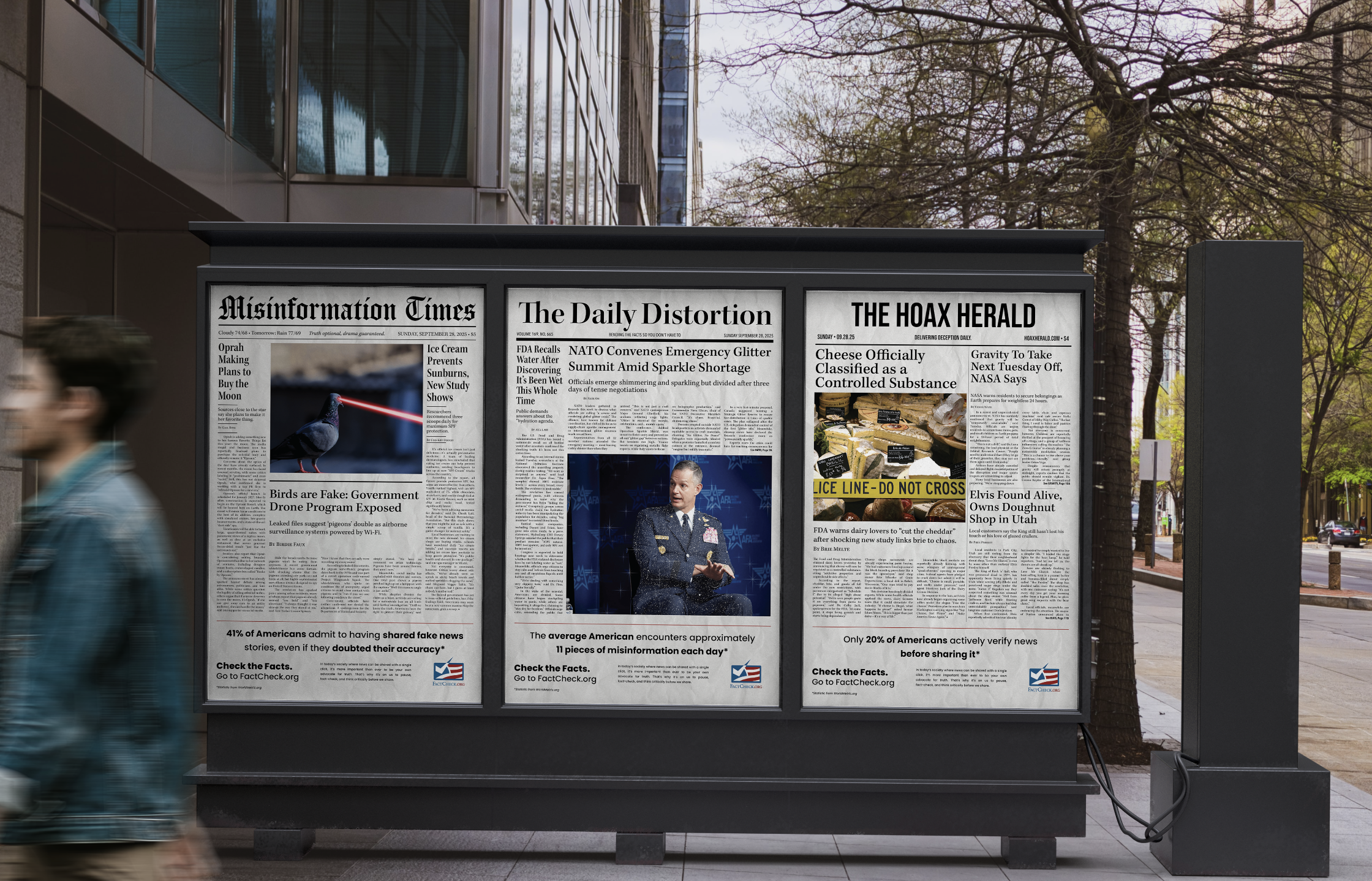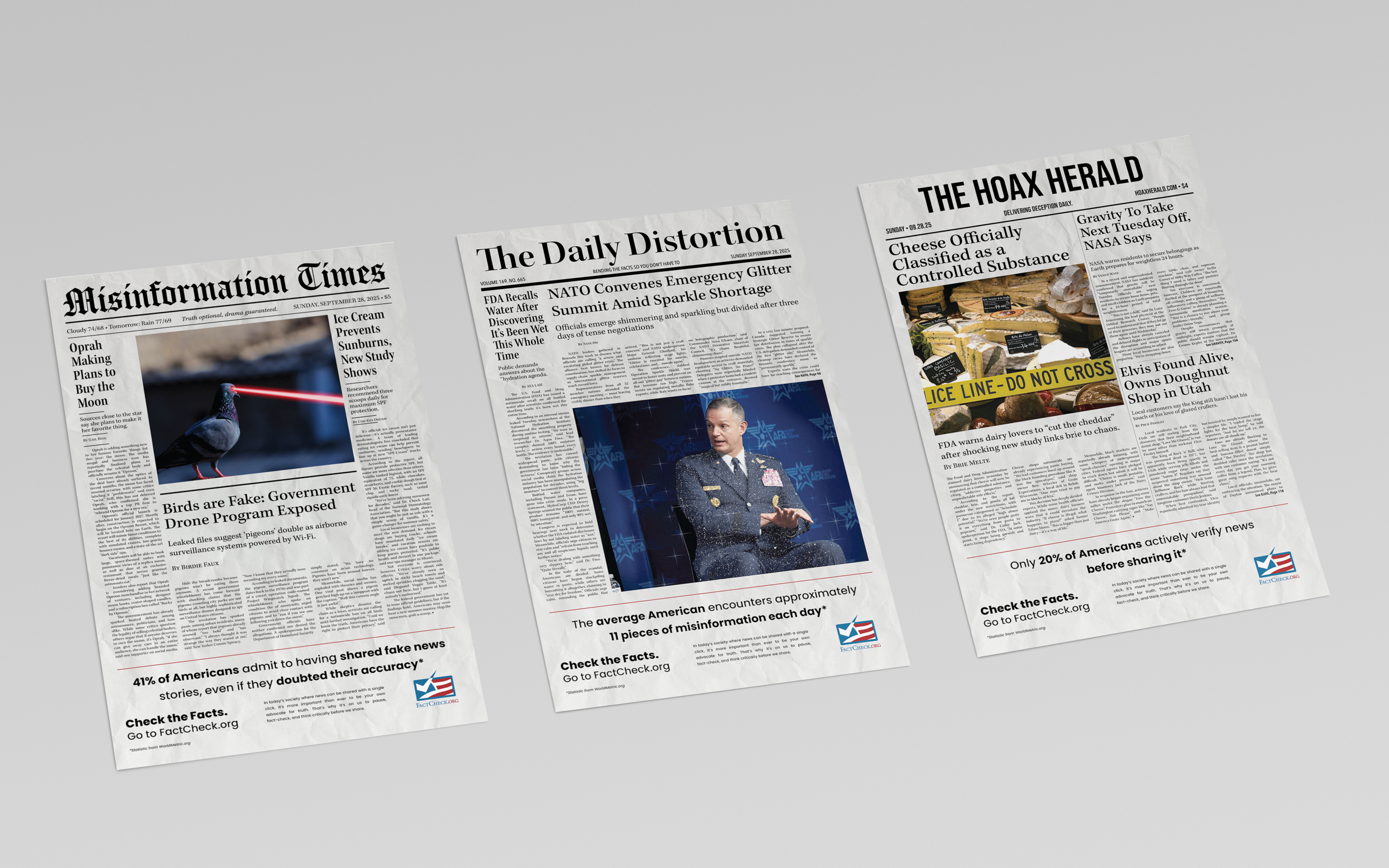
Fact-Check
Project Type
Portfolio Triptych
Keywords
Perception, Satire, Truth
Year
2025
Fact-Check is a satirical exploration of misinformation and media influence, something that affects everyone in today’s information-saturated world. Through three fabricated newspapers, the project examines how layout, typography, and tone can make even the most absurd stories feel believable. It also highlights how easily misinformation spreads and how rarely it’s questioned. I wanted to use design as a tool to spark awareness, encouraging people to think critically, question their sources, and make fact-checking a daily habit.
I chose Kepler Std for its close resemblance to traditional newspaper typography, which helped establish a sense of familiarity and credibility within the fabricated layouts. During my research, I found that similar serif styles were often used in legacy publications, making it the perfect choice to ground the satire in realism. To balance this, I used Poppins in the footer and call-to-action sections for a modern, digital contrast. Its clean geometry reinforces the project’s message about fact-checking and media awareness, shifting the reader from passive consumption to active critical thinking.
Type Choice
For my misinformation triptych, originally titled Check the Source, I set out to create a campaign that tackled misinformation and bias in modern media. With so much news coming from social media, false or heavily biased information spreads faster than ever, especially among young adults. This series encourages viewers to slow down, question their sources, fact-check, and look beyond the algorithm. Each concept explored a different way
to visualize misinformation, from exposing bias in headlines, to contrasting truth and distortion, to showing just how easily misinformation can pass
as fact.
Concepts & Sketches
My first digital version included two newspapers full of misinformation and one with real stories. The goal was to show how easily false information can look just as believable as the truth, and how design can make even the absurd seem credible. I added a call to action that directed readers to FactCheck.org, a great resource for verifying information on all kinds of topics.
After some thought about how to make the project feel more cohesive, I created a second version made up entirely of misinformation-based stories. That change let each poster stand on its own while still working together as one series. I adjusted the layout to look like three distinct newspapers, added more detail to the footer, and briefly experimented with color to see how it could affect the tone. I also decided to include statistics to highlight just how widespread misinformation really is and to drive home the importance of questioning what we read.
Digital Iterations
After a few more rounds of reworking, I updated the stories on the new misinformation poster so they matched the others and felt more cohesive. I decided to remove the color because it distracted from the realism and impact of the design, especially since each story is fully written. I also tweaked the footer to give it more weight and added a newspaper texture to really drive home the idea that these could pass as legitimate publications.
Almost There
Then came the final version! After a few more small edits, I tightened up the footer and added extra spacing to separate it from the misinformation content, helping it feel more intentional and distinct, more like part of the design than an ad. In the end, I was really proud of how the series came together as a cohesive, impactful statement about how easily misinformation can blend into the everyday.
Perfecting the Details
I believe I achieved that intent by blending satire with realism to show just how convincing design can be. Every choice, from typography and texture to headline tone, was made to mimic the credibility of real news. By pushing viewers to pause and look closer, Fact-Check reinforces the idea that good design can inform, but it can also deceive, and that awareness is the first step toward media literacy.
Intent








